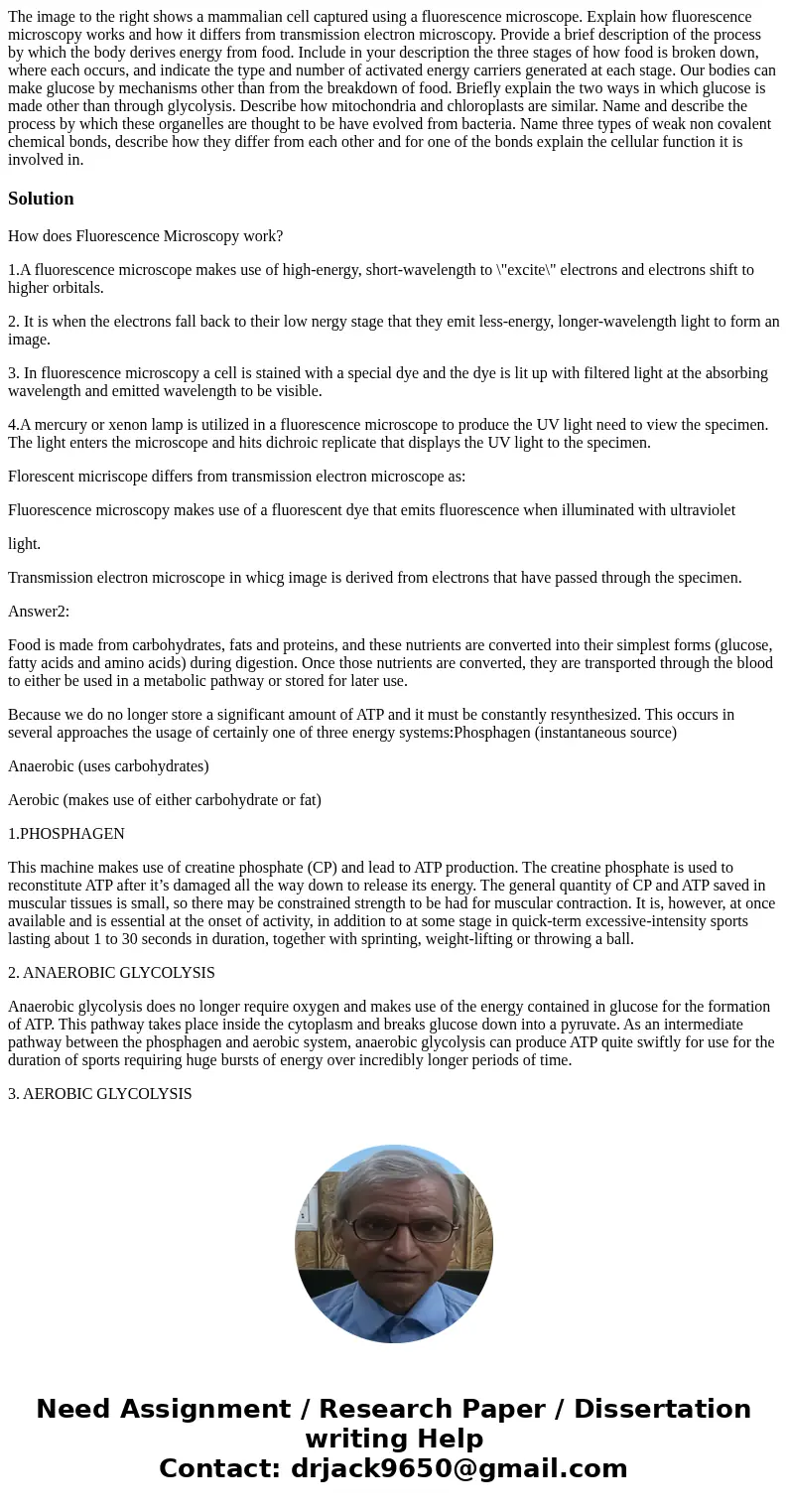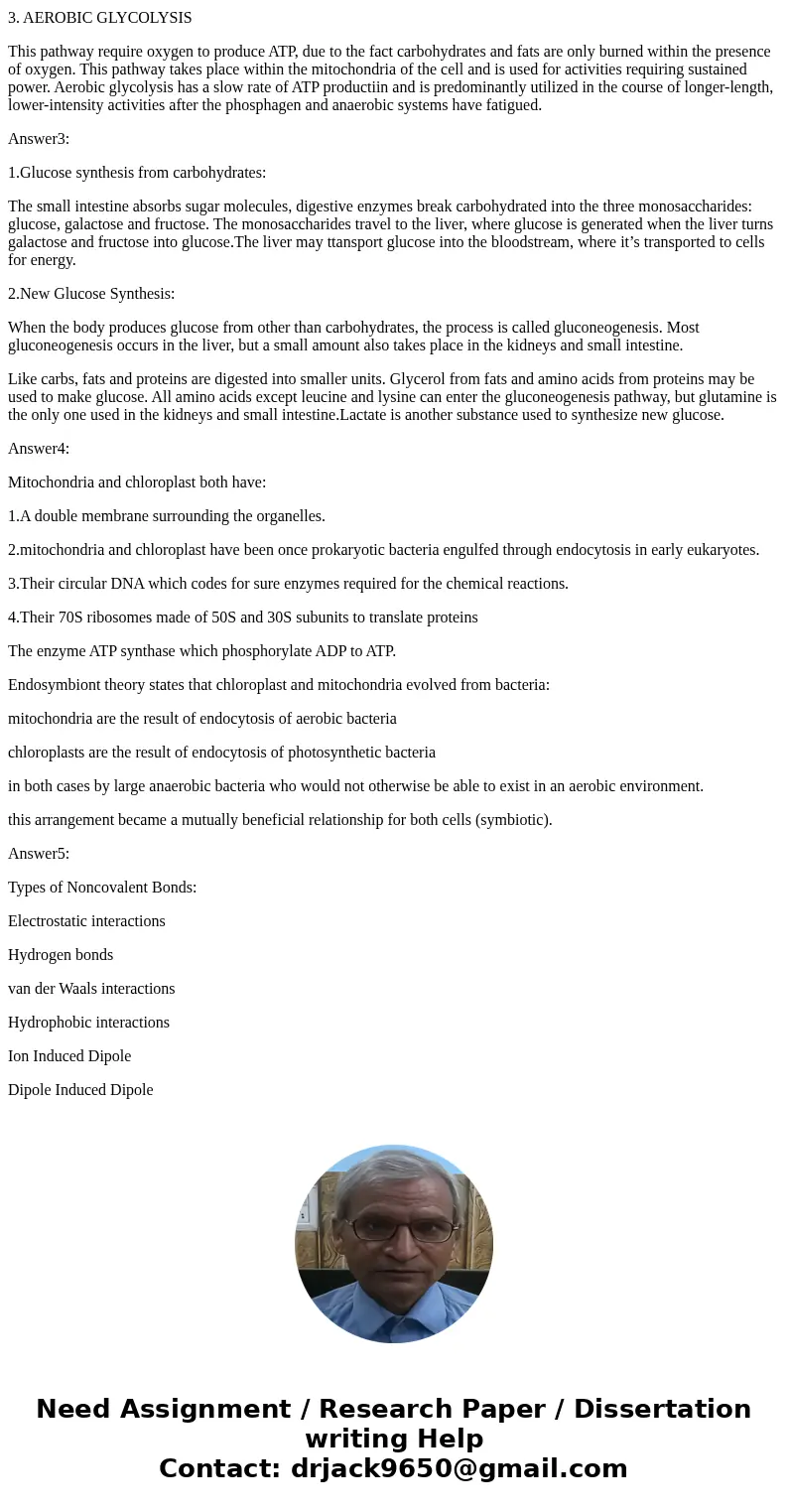The image to the right shows a mammalian cell captured using
Solution
How does Fluorescence Microscopy work?
1.A fluorescence microscope makes use of high-energy, short-wavelength to \"excite\" electrons and electrons shift to higher orbitals.
2. It is when the electrons fall back to their low nergy stage that they emit less-energy, longer-wavelength light to form an image.
3. In fluorescence microscopy a cell is stained with a special dye and the dye is lit up with filtered light at the absorbing wavelength and emitted wavelength to be visible.
4.A mercury or xenon lamp is utilized in a fluorescence microscope to produce the UV light need to view the specimen. The light enters the microscope and hits dichroic replicate that displays the UV light to the specimen.
Florescent micriscope differs from transmission electron microscope as:
Fluorescence microscopy makes use of a fluorescent dye that emits fluorescence when illuminated with ultraviolet
light.
Transmission electron microscope in whicg image is derived from electrons that have passed through the specimen.
Answer2:
Food is made from carbohydrates, fats and proteins, and these nutrients are converted into their simplest forms (glucose, fatty acids and amino acids) during digestion. Once those nutrients are converted, they are transported through the blood to either be used in a metabolic pathway or stored for later use.
Because we do no longer store a significant amount of ATP and it must be constantly resynthesized. This occurs in several approaches the usage of certainly one of three energy systems:Phosphagen (instantaneous source)
Anaerobic (uses carbohydrates)
Aerobic (makes use of either carbohydrate or fat)
1.PHOSPHAGEN
This machine makes use of creatine phosphate (CP) and lead to ATP production. The creatine phosphate is used to reconstitute ATP after it’s damaged all the way down to release its energy. The general quantity of CP and ATP saved in muscular tissues is small, so there may be constrained strength to be had for muscular contraction. It is, however, at once available and is essential at the onset of activity, in addition to at some stage in quick-term excessive-intensity sports lasting about 1 to 30 seconds in duration, together with sprinting, weight-lifting or throwing a ball.
2. ANAEROBIC GLYCOLYSIS
Anaerobic glycolysis does no longer require oxygen and makes use of the energy contained in glucose for the formation of ATP. This pathway takes place inside the cytoplasm and breaks glucose down into a pyruvate. As an intermediate pathway between the phosphagen and aerobic system, anaerobic glycolysis can produce ATP quite swiftly for use for the duration of sports requiring huge bursts of energy over incredibly longer periods of time.
3. AEROBIC GLYCOLYSIS
This pathway require oxygen to produce ATP, due to the fact carbohydrates and fats are only burned within the presence of oxygen. This pathway takes place within the mitochondria of the cell and is used for activities requiring sustained power. Aerobic glycolysis has a slow rate of ATP productiin and is predominantly utilized in the course of longer-length, lower-intensity activities after the phosphagen and anaerobic systems have fatigued.
Answer3:
1.Glucose synthesis from carbohydrates:
The small intestine absorbs sugar molecules, digestive enzymes break carbohydrated into the three monosaccharides: glucose, galactose and fructose. The monosaccharides travel to the liver, where glucose is generated when the liver turns galactose and fructose into glucose.The liver may ttansport glucose into the bloodstream, where it’s transported to cells for energy.
2.New Glucose Synthesis:
When the body produces glucose from other than carbohydrates, the process is called gluconeogenesis. Most gluconeogenesis occurs in the liver, but a small amount also takes place in the kidneys and small intestine.
Like carbs, fats and proteins are digested into smaller units. Glycerol from fats and amino acids from proteins may be used to make glucose. All amino acids except leucine and lysine can enter the gluconeogenesis pathway, but glutamine is the only one used in the kidneys and small intestine.Lactate is another substance used to synthesize new glucose.
Answer4:
Mitochondria and chloroplast both have:
1.A double membrane surrounding the organelles.
2.mitochondria and chloroplast have been once prokaryotic bacteria engulfed through endocytosis in early eukaryotes.
3.Their circular DNA which codes for sure enzymes required for the chemical reactions.
4.Their 70S ribosomes made of 50S and 30S subunits to translate proteins
The enzyme ATP synthase which phosphorylate ADP to ATP.
Endosymbiont theory states that chloroplast and mitochondria evolved from bacteria:
mitochondria are the result of endocytosis of aerobic bacteria
chloroplasts are the result of endocytosis of photosynthetic bacteria
in both cases by large anaerobic bacteria who would not otherwise be able to exist in an aerobic environment.
this arrangement became a mutually beneficial relationship for both cells (symbiotic).
Answer5:
Types of Noncovalent Bonds:
Electrostatic interactions
Hydrogen bonds
van der Waals interactions
Hydrophobic interactions
Ion Induced Dipole
Dipole Induced Dipole


 Homework Sourse
Homework Sourse